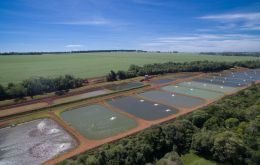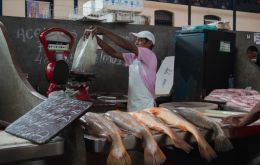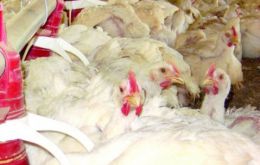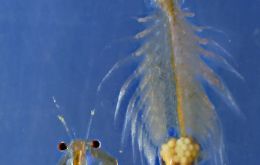MercoPress. South Atlantic News Agency
Tag: fish farming
-
Saturday, July 30th 2022 - 09:52 UTC
Brazil's incipient fish farming industry doubles export revenue in first half 2022

Brazil's incipient fish farmed exports in the second half to 2022, doubled in value and increased 14% in volume compared to Jan/July 2021. In effect sales reached US$ 14,3 million, from US$ 7,2 million y-to-y, with volume increasing to 4,931 tons from 4,327 tons.
-
Thursday, February 10th 2022 - 09:25 UTC
Brazil aquaculture exports totaled 9,900 tons in 2021

Brazilian farmed fish exports totaled 9,900 tons last year, 49% more than in 2020, according to Embrapa data in partnership with the Brazilian Fish Farming Association (PeixeBR). Revenue from shipments increased 78% to US$20.7 million.
-
Wednesday, November 19th 2014 - 09:49 UTC
Great future for aquaculture forecasts FAO; record output of 66.5m tons in 2012

Fish farming will likely grow more than expected in the coming decade, offering a chance for improved nutrition for millions of people, especially in Asia and Africa, according to a new report, from FAO.
-
Thursday, February 6th 2014 - 04:58 UTC
Aquaculture will provide close to two thirds of global food fish by 2030, says FAO

Aquaculture, or fish farming, will provide close to two thirds of global food fish consumption by 2030 as catches from wild capture fisheries level off and demand from an emerging global middle class, especially in China, substantially increases.
-
Thursday, April 29th 2010 - 18:59 UTC
Fish Meal Price Rockets Because of Chilean Earthquake Damage to Plants

The earthquake in Chile earlier this year destroyed Chilean processing plants tightening world supply of fishmeal and causing world market prices to hit an all-time high. Chile is the world’s second biggest exporter of fishmeal, second only to Peru.
-
Thursday, April 29th 2010 - 18:49 UTC
Australia Opens Brine Shrimp Farm, Key Component in Aquaculture Food Chain

Australian Fisheries Minister Norman Moore embraced the aquaculture potential of Western Australia with the opening of a cutting edge-design commercial brine shrimp farm at Port Gregory, near Geraldton.
